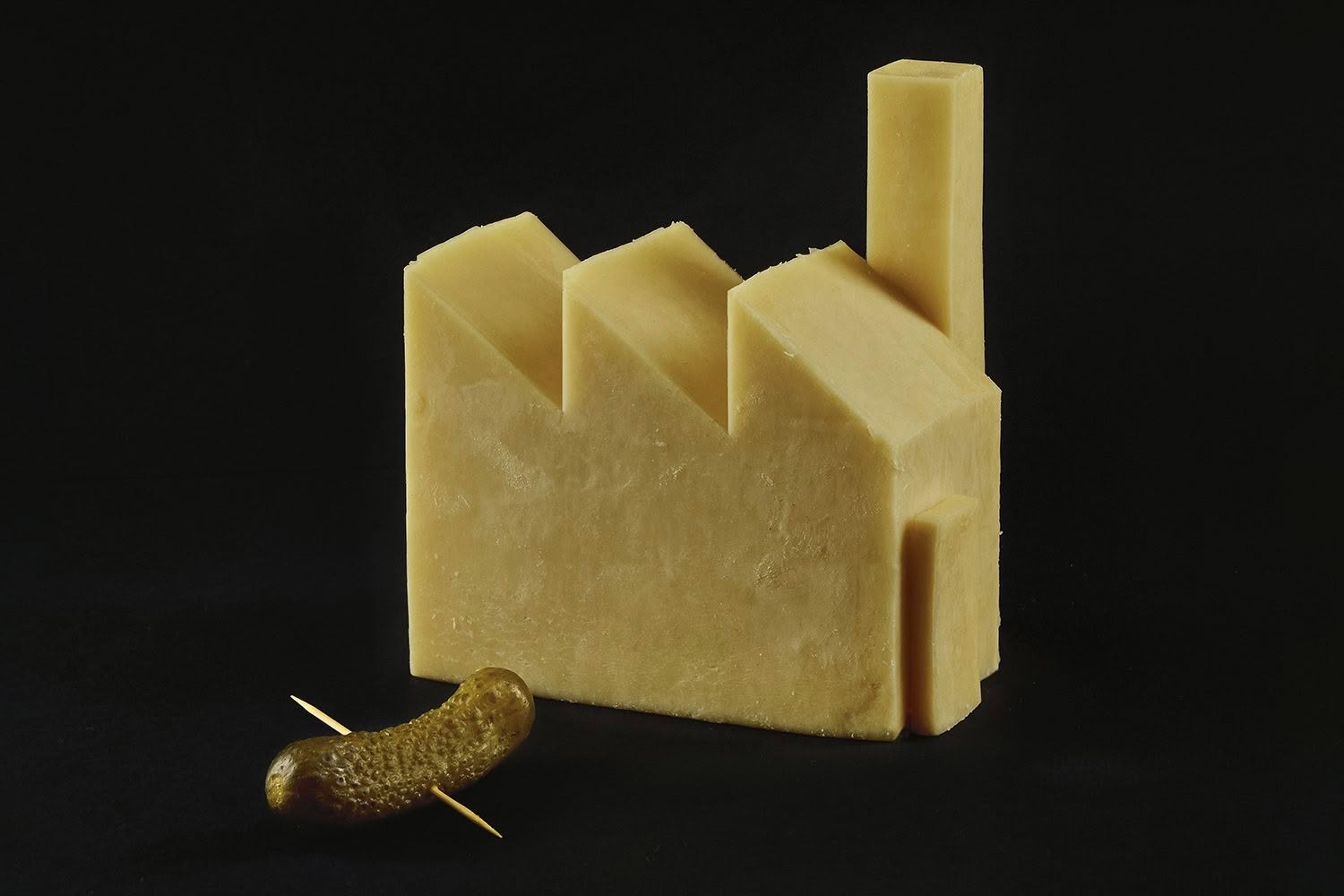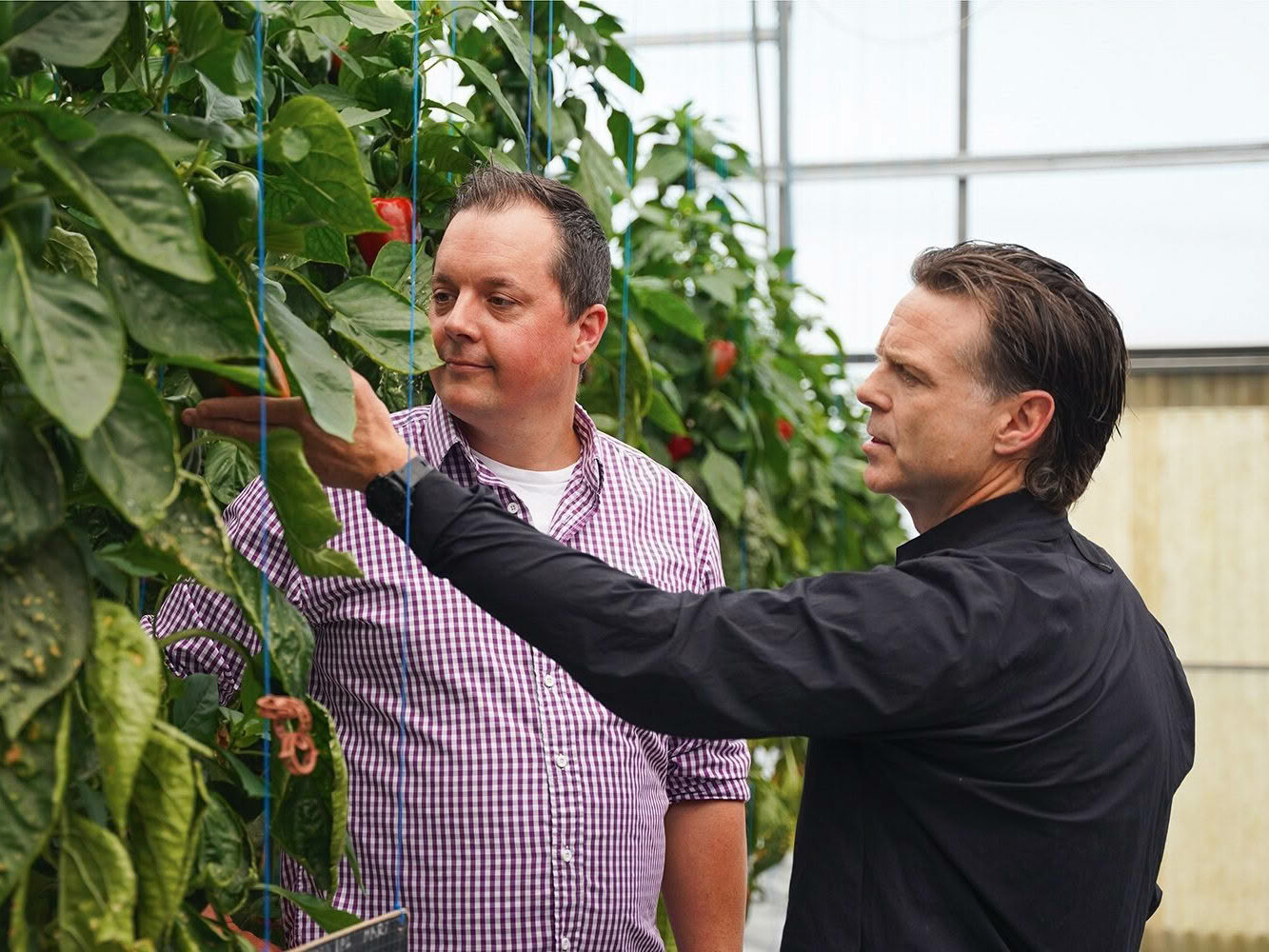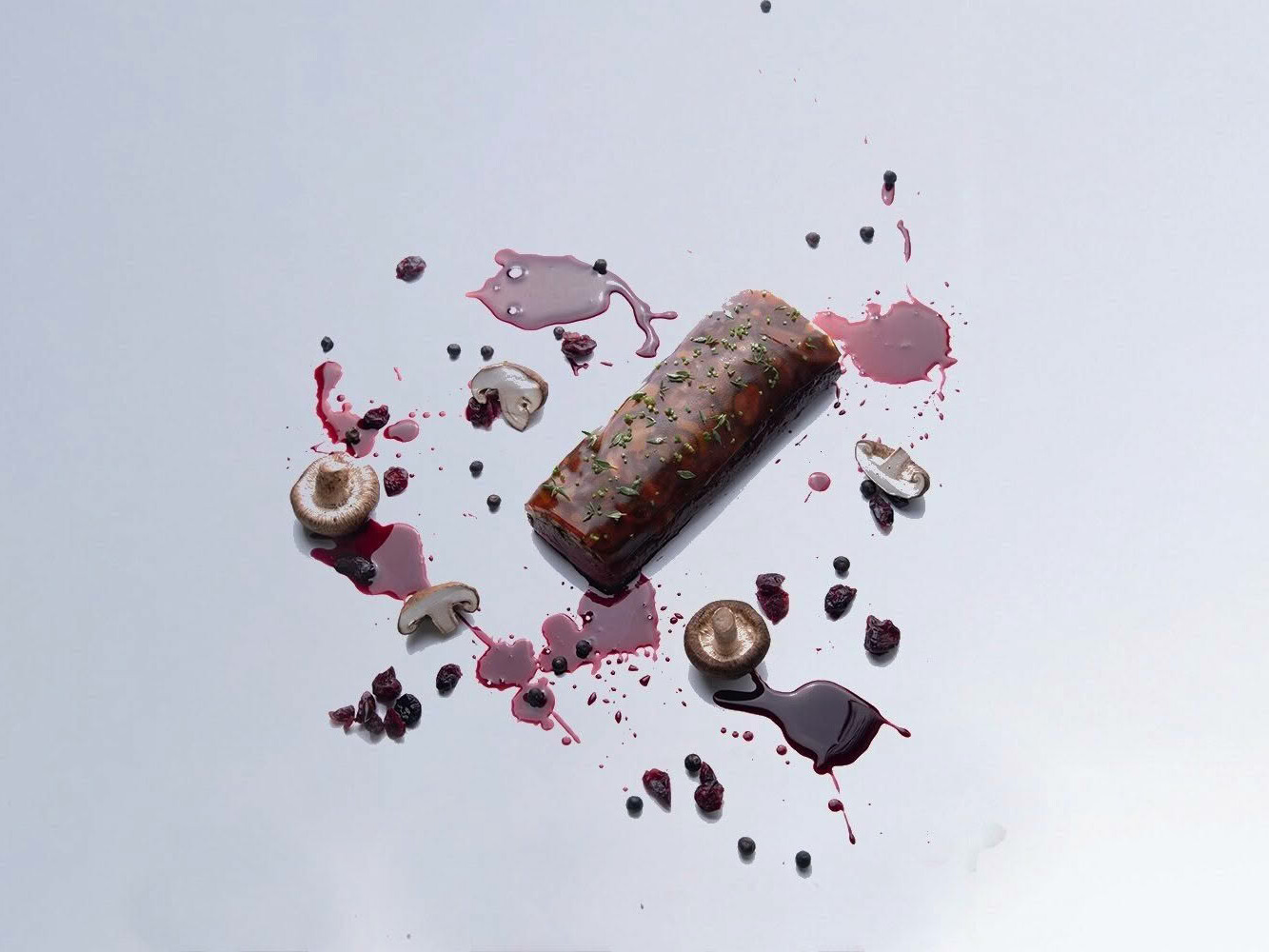Homage to Marie Shannon’s The House of Parmesan, collection of Museum of New Zealand Te Papa Tongarewa
No doubt about it, New Zealand is technically in a recession, a cost-of-living crisis or, as it’s now themed, ‘Survive till 2025’. Many small-scale cheese operators have closed their doors recently, while others are hanging on like a wedge of brie on a cracker. Toss a decline in premium spend with rising operating costs, increased competition and political policy and it adds up to tough times for this corner of our industry.
New Zealand’s speciality cheese industry is made up of two large players: Goodman Fielder and Fonterra. These two supply around 80% of domestic production, with smaller regional producers feeding in the other 20%. We then have the EU imports, which now have muscled into our supermarkets to take around 40% of the retail market.
All cheese producers and businesses are being hit with increasing operational costs: labour, insurance, ingredients, power – try to find one thing that hasn’t leapt up significantly.
In the speciality cheese sector, the large corporates dominate. Due to their scale and might they supply a large basket of products into the grocery market – milk, cream, butter, bread, baked goods, snacks, yoghurt, ice cream, cream cheese, commodity cheese lines and, yes, a range of speciality cheese brands – so they can subsidise one category with another.
With that scale comes a suite of promotional plans across their multiple categories and brands. Meanwhile, the small-scale specialised cheese producers come to the retail promotion table with just one line of cheese and a thinly sliced budget in comparison to the telephone number-sized multi-category corporates.
The larger corporates in the industry are also battling to control their profitability, with Fonterra now moving away from consumer value-added branded products altogether. But while economic conditions are challenging everyone, the big guys have much larger balance sheets to lean on than us little guys. Fonterra’s signal to retreat to their ingredient-supply core business proves that consumer-led business is difficult. Even the big boys with their corporate scale are finding it tough as nails.
Specialised cheese producers certainly cannot look to the Beehive for market protection (though in France they block the streets with tractors to protect their market!). In the Government’s enthusiasm for an export-led GDP model, we are simply collateral damage. The New Zealand commodity export drive certainly takes priority over the small domestic producer.
To add to this we have our own MPI-imposed highly restrictive export audit compliance costs (requiring four site audits each year) which for many small producers rules out shipping speciality cheese to the larger offshore markets. Understandably we need to abide by the same rules as the big exporters to protect our ‘Brand NZ’ standards. So the small New Zealand cheese producer is limited to the Australian and domestic market to develop scale.
In our domestic market, our open free-trade borders allow government-subsidised EU-produced cheese to be shipped over from the other side of the world to enter tariff free. The majority of cheeses are made by automation then frozen to endure the journey over – there is no chilled air-freight system available, only insulated wraps in ships’ holds.
So how does the consumer factor those food miles into their personal spending decision? Does the benefit of having affordable imported cheese in the fridge outweigh the carbon footprint expense? Yes. As New Zealand consumers are hit with rising household costs and must make decisions at the supermarket about what to fill their cupboards with, the cheap alternative is still going to win a place on the home shelf by being the value solution. The 40% of our retail market share held by EU imports is significant and all thanks to the zero-import tariff trade deals put in place to drive our GDP. As a result, these high-food-miles cheeses are here to stay. Unable to compete on either price or volume, the small producer is pushed aside.
The ‘dine in over dine out’ behaviour imposed during COVID lockdowns still occurs now during this cost-of-living survival storm. People are still enjoying quality meals cooked at home as a cost-effective alternative to dining out, as pricey restaurants become a luxury only for some. Premium food is still being enjoyed, but the ingredients are being sourced from grocery stores. The restaurant trade has long been a supporter of small specialist cheesemakers, with chefs’ skills showcasing the variety and quality of locally made artisan cheese. So this dine-at-home trend narrows the exposure of our quality product to consumers, and with a reduction in dining out comes a reduction in cheese consumption from the food-service industry.
So, what can we do to make sure we see 2025? Exactly how do we meet the prime minister’s target of doubling exports to drive the nation’s earnings? Maybe some big-picture strategy would aid those who weather the current storm.
This is the predicament: we have a clean, green pasture-production base that hasn’t evolved much beyond primary production. Why don’t we value-add more here before our exports are shipped away as commodity lines to importers who then add value? We need to add value to our exports before they leave, investing in cutting-edge operations to produce high-nutrition, high-value, sought-after exports.
If we want to tap the lucrative offshore markets, how do we justify those export food miles? Somehow we need our food exports to thrive without creating a dirty carbon footprint, by creating an eco-friendly supply-delivery chain to get our world-class produce to market. While chilled airliners, hydrogen-electric planes and sailing ships with solar power could be the future solution, right now New Zealand Trade & Enterprise might help develop a carbon-friendly supply chain to ship our precious high-value products to market. I applaud Christopher Luxon’s goal of doubling exports in 10 years – we just need to figure out the ‘how’ part for small cheese producers.
Retailers, while they are continually blamed for increasing their prices on shelf, are also faced with all the same storm of operating costs – inflationary operational costs do not discriminate. We all need supermarkets to remain sustainable and do the job of making food readily available, however they also need to support the New Zealand producer’s ability to reach their treasured local consumer base.
The New Zealand consumer must be reminded that our cashflow is best kept locally, with our ‘Shop Local, Buy New Zealand Made’ logic now being ever so significant. We must persuade buyers to give local makers priority – sure, it costs a couple of bucks more to take the moral high ground of buying a New Zealand-made product, however it’s a worthy cause and is now a critical one.
To survive we must adapt: we can innovate, upskill our people and diversify into new realms. An example is the new Oamaru-based Whitestone Cheese Diner & Deli operation. With this we will build brand and develop loyalty; we will open the window on what we do with guided factory tours; we will provide a full cheese-flavour experience, plating and serving some wild combinations to show what can really be done with cheese. Flagrant self-promotion, maybe, so let’s ignite some excitement by providing cheese leadership and build brand loyalty in return. We are still young as a nation in this speciality cheese trade compared to Europe, so let’s tell people what we’re doing.
There’s plenty to ponder while enjoying your next cheese slice with your favourite wine or beer. It’s difficult to see how a small New Zealand cheesemaker can tackle global economic woes, compete with economies of scale, change government policy or fix the nation’s infrastructure, but I know what we can do: eat, spend and, best of all, live local. Every bit of support helps. Your cheese needs you.
SEE MORE FROM CUISINE
Design File / Sara Bruce / Exhibit A / Auckland
The contents in a cold glass should be savoured. Having one superb…
When only the very best will do
How Bocuse d’Or Team New Zealand will meet the highest standards at…
Aotearoa New Zealand’s most influential & inspiring women in food & drink 2025
Cuisine’s pick of the women set to influence our food-and-drink scene…






